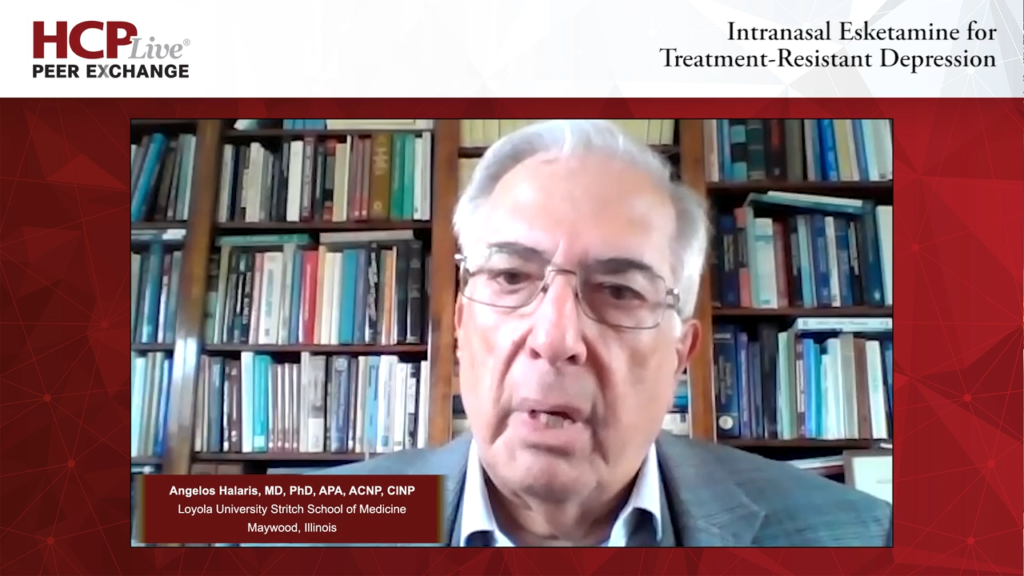Steven Levine, MD: On the heels of this off-label use of IV [intravenous] ketamine for patients with treatment-resistant depression, we’ve seen the FDA approval of another form of ketamine, esketamine, delivered intranasally for treatment-resistant patients. Patricia, would you like to comment on the mechanism of action of esketamine?
Patricia Ares-Romero, MD, FASAM: Sure. When esketamine was finally approved by the FDA, it was such a game changer for our patients. Lisa said it great when she said that it’s really giving their lives back. It’s really making them feel well. We know it’s a receptor antagonist to the glutamate system. It’s not really known because of all the cascade that Lisa so beautifully mentioned. The fact that we’re able to see improvement in patients within the first 24 hours to the 4 weeks is just incredible. It’s stepping away from that monoamine model that we had with SSRIs [selective serotonin reuptake inhibitors] and SNRIs [serotonin-norepinephrine reuptake inhibitors] that took 4 to 6 weeks, if we were lucky, to see any response from our patient. It’s heartbreaking when a patient comes to you after 2 or 4 weeks and says, “Doctor, nothing has changed. I still feel terrible,” when you didn’t have anything else in your armamentarium to give them and say, “Let me alleviate your pain.” This new mechanism of action through the glutamate system is going to be a game changer for us, for psychiatrists, for a long time.
Steven Levine, MD: Yes, it’s very helpful. Angelos, I know you also have experience with prescribing intranasal esketamine. Can you comment on the rapid reduction of depressive symptoms you’ve seen compared with other treatments, like the SSRIs and SNRIs?
Angelos Halaris, MD, PhD, APA, ACNP, CINP: The reduction of depressive symptoms definitely happens a lot sooner than with any of the other conventional treatments like SSRIs, SNRIs, or neither, like Wellbutrin, or bupropion, which is predominantly dopaminergic. However, I’d like to be a little cautious here and not sound too optimistic. Some patients show some relaxation, a temporary relief, even after the first dose, but it’s important not to say, “After a week, you’re doing great. See you in 6 months, if ever.” That would be wrong. I have patients who took 2 months of treatment, twice a week, to get to the point where they had better than 50% improvement.
Do not discontinue after a month or 2. Prolong it. Space out the frequency of visits. Get into maintenance. The maintenance can also differ—once a week, once every other week. The longest I’ve done is once every 3 weeks. We don’t have any data because, as Lisa said, the drug has been on the market for 2 years. We don’t have any long-term data to be able to say, “After a year of treatment, you can discontinue it.” Based on the rather limited experience we all have, a booster approach should probably be considered, along with perhaps a break of a few months before resuming, assuming everything else is OK in the patient’s life. That’s what we used to do, or maybe still do, with ECT [electroconvulsive therapy] and TMS [transcranial magnetic stimulation]. I suspect this is likely to be the case with esketamine as well.
Steven Levine, MD: Thank you for watching this HCPLive® Peer Exchange. If you enjoyed the content, please subscribe to our e-newsletters to receive upcoming Peer Exchanges and other great content right in your in-box.
Transcript Edited for Clarity
